Decorative, frost-resistant tree shrub with a stable yield of early juicy fruits - this is a brief description of the felt cherry. Perennial, besides, unpretentious in care and quickly adapts to complex climatic conditions. The lowestness and compactness of this fruit culture makes it convenient to collect crishes crops and use densely scattered bushes as a decorative landscape decoration.
Along with the mass of the designated advantages of felt cherries, there are a number of shortcomings. What are the "weak points" of the cherry of this species and how to eliminate them? How to put the felt cherry? What variety to choose? These and many other questions can be found answers in this selection of material.
Cherry felt, plant description
- The type of cherry felt belongs to the type of drain and the subfamily of fine-coined cherries (microvision). It is called differently: Tomenotosis (from the Latin name of the type "Prunus Tomentosa"), the Cherry Chinese (at the place of origin), the cherry fluffy (for morphological features). The name of the type "felt" is associated with the easy omission of shoots, the lower side of the leaves and the fruits of cherry.
- China, Mongolia and Korea is considered the birthplace of this type of cherry. Currently, culture is widespread in moderate latitudes of Europe and North America. The culture in the regions of the middle strip of Russia is growing perfectly and fruits.
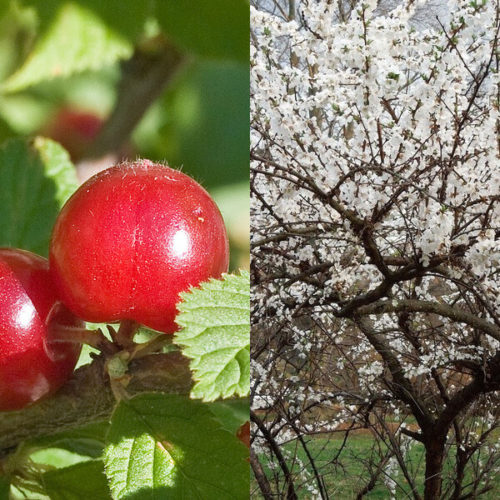
- Cherry felt - high, weird shrub. The height of the plant varies from 1.5 to 3 m, depending on the conditions of growth and the varietality.
- Shrub has several central thickened trunks. Thin branches are quickly thickened, forming an empty and thick crown.
- The root cherry system is branched, horizontal, not deep. A distinctive feature of the low-spirited cherry is the lack of root row (like an ordinary cherry).
- The leaves of oval shape with an acute end, corrugated, lowered low. Coloring sheet plate - dark green.
- White flowers, often with "pink" in the center, small (2-2.5 cm). A short fruit makes them practically "sitting" on shoots, which looks very impressive during the flowering period and resembles lush bouquets. Such a cluster of flowers attracts a large number of bees.
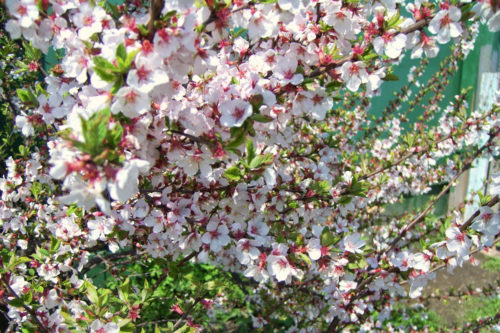
- The fruit characteristic of all types of cherries, kitchen cabin, but significantly smaller sizes (0.7-1.5 cm). Ripe fruits have bright red color, sweet with sour taste taste and easy omission. Shrub fertures abundantly during the summer, from June to July, depending on the region of growth. The cherry branches are literally rusked with fragrant fruits, tightly adjacent to each other. They are much longer held on branches, compared to other types of cherry.
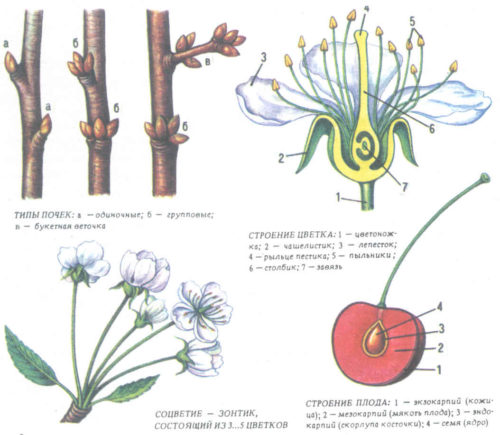
- The only lack of cherry fruits - they are soft and fragile, so the collected "berries" quickly deteriorates, poorly stored and are not suitable for transportation.
- The average life expectancy of a webly shrub is small, about 10 years. But the annual rejuvenating trimming of the plant allows you to extend this period almost 2 times.
- Cherry felt - unpretentious, high-yielding culture, resistant to drought and frosts (up to - 40 0WITH). Annual stable harvest of an adult plant averages about 10-15 kg cherries from one tree.
- Many varieties of cherry felt are self-visible cultures, therefore, for effective cross-pollination of flowers, you need to plant at least 2 varieties of pollinator (better than 3-4) with the same flowering period.
Felt cherry, varieties
Cherry felt varieties are divided, depending on the timing of flowering and ripening, on early, medium and late varieties.
Choosing a landing grade, you should navigate not only on the morphological features of the culture, taste quality berries, but also on the duration of flowering shrubs. Thus, in the regions with frequent return freezers, the Rannetic Varieties of the cherries felt are not suitable. For the regions of the middle lane, it is better to plant medium and late frost-resistant varieties of cherry.
Consider the best varieties of cherry felt, their distinctive features, advantages and disadvantages.
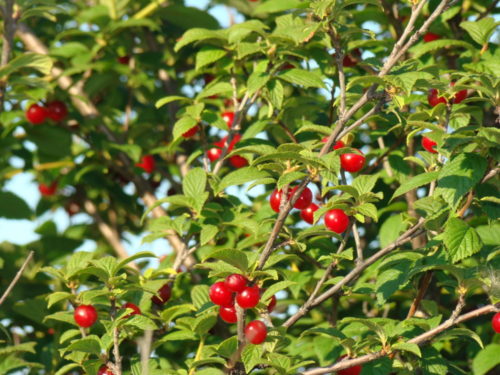
Early grade felt cherry
- Cherry felt Natalie
High-resistant shrub with a wide and thick crown. Flowers with pink inflorescences, rather large sizes. The fruits of the cherry blossom, sour sweet. The fire has no more than 4 g, with a dense and shine pulp. Separation from escape. It can be stored in a cool place up to 6 days. The yield is average, 7-10 kg from the plant.
- Cherry felt childish
Sustal of medium thickening, with bright red fruits, weighing about 4 g. The taste of shine pulp - sour-sweet. Out of the fetus semi-dry. High yield, up to 15 kg.
- Cherry felt fabulous
Cherry Crown is wide and spread, fruit with glossy glitter, dark burgundy. The flesh of the bustle is dense, fibrous, sour-sweet. The yield is 10-12 kg from one shrub.
- Cherry felt yield
Shrub with a wide and spreaded crown. Fruits small, up to 3 g, dark pink color. The flesh is sour-sweet, dense, shrinkable. Yield up to 12 kg.
- Cherry Felt Alice.
The bush is thick, oval, the average growth force. Fruits of oval shape, burgundy color, with a semi-dry margin. The flesh is dense, fibrous, sour-sweet. Grade winter-hardy, medium yield (8-9 kg).
Photo of the variety "Alice"
Medium grade felt cherry
- Cherry felt jubilee
High-resistant bush of medium thickening. Fruits weighing 3.5-4.5 g, dark red, juicy, with fibrous pulp. Yield about 8-9 kg.
- Cherry felt white
A medium height, an empty bush, is plentifully "seated" with small fruits of cherries (2.5-3 g). The painting of the fire is unusual - matte-pale. The flesh is juicy, sour-sweet. The yield is medium - up to 10 kg.
- Cherry Felt Tsarevna
Witting and low-spirited variety of cherry. Brightly pink fruits, weighing up to 4 g, are distinguished by a juicy and dense pulp. The variety is characterized by high winter hardiness and yield (up to 10 kg).
- Cherry felt desolation eastern
Little bush, with wide scattered crown. Dark burgundy fruits have a gentle, sour-sweet pulp. Yield does not exceed 7 kg.
- Cherry felt light
Compact, medium growth strength, bush. Fruits are large, up to 4 g, with thick sweet and sweet pulp. The variety is not transported, the yield is average.
Stock Foto Sort "Spark"
Late grade felt cherry
- Cherry felt ocean Virovskaya
Compact, medium thickening, high-spirited shrub. Dark burgundy fruit, sour-sweet taste, with a dense and shine pulp. Mass of one busty no more than 3 - 3.5 g. Yield up to 9 kg.
- Cherry Ferry Summer
Large variety of moderate yield. The bush is compact, with an average degree of branching. Fruits of light red color. The flesh is juicy, sour-sweet, a little fresh.
Photo of the Summer
Choosing a landing grade, it is important to take into account the maximum of the necessary qualities: frost resistance, shape and size of shrub, yield, resistance to disease and pests, dates of ripening, taste and self-duration.
The breeders withdrawn a lot of varieties of sammond cherries felt. These include such varieties: children's, delight, summer, oriental, trian, beauty, dream, fairy tale, light, jubilee, princess, desorana oriental. Self-free varieties are able to tie the fruits well, pollinating the pollen of the flowers of the same plant.
Also, when choosing a seedling variety, it is necessary to take into account the reviews of the practitioners grown by the felt cherry on their plot.
Felt cherry, breeding methods
The felt cherry breeds in different ways: seeds (bone), cuttings, grain, vaccinated or eyepiece. It is easily crossing with such fruit crops, like plum, peach, allycha and apricot. Consider the most simple and effective of them.
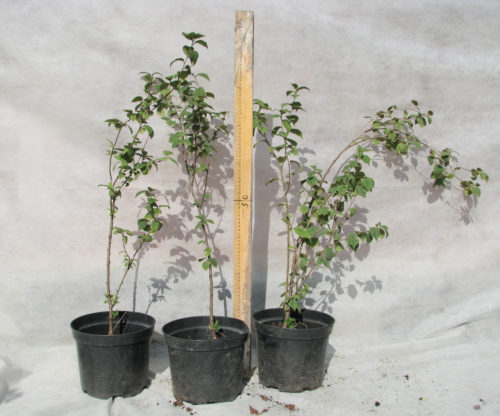
Reproduction of felt cherry seeds
- It is considered simple, preserving the general characteristics of the maternal shrub, the method of reproduction. Not suitable for reproduction of varietal varieties of cherries felt. Saplings grown out of bones are well adapted to local grades.
- To do this, select the largest cherry bones, wash them and dried in a place protected from the sun.
- At the end of the summer, the bones are placed in a container with wet sand (tyrsa, sawdust), where they are stored in a cool room (cellar, refrigerator) until October. For high-quality seed stratification, it is important to maintain the constant humidity of the sand.
- In October, the seeds (bones) are sown to the garden, in shallow (2-3 cm) grooves with an interval of 2 cm. The grooves fall asleep soil mixed with sawdust and humus.
- In the spring, the seedlings of the cherries felt, if necessary, thinned. The following year, grown and strengthened sprouts of Cherry transplant to a permanent place.
- Challenged (stratified) for winter seeds can also be planted in early spring.
- Saplings grown out of the bone, fruiting starts for the 3-4th year.
Reproduction of felt cherry cutlets
- Stalks are breeding varietal types of cherries felt.
- Hanging cuttings are needed from the elaboration of the second or third branch. When trimming the shoots under the cuttings, the lower cut should be formulated, and the top is smooth.
- For cuttings, short shoots are cut down with a length of 15-20 cm (with the presence of at least 4-intercity), withstand them in the growth stimulatory solution and planted into the prepared soil. Soil is better to make mixing in equal parts of sand, peat and soil.
- Warm cuttings are deepened into the soil of 2 cm, and green - 1 cm.
- Locked cuttings are watered and covered with a film, observing the permanent wet microclimate inside the greenhouse. The greenhouse is better to install in a half sense, so that it does not get a lot of sun.
- During the month, roots appear in the arrogant cuttings.
- Saplings that appeared from green cuttings, begin fruiting for the 3rd year, and from the weird shoots - for the 2nd year of life.
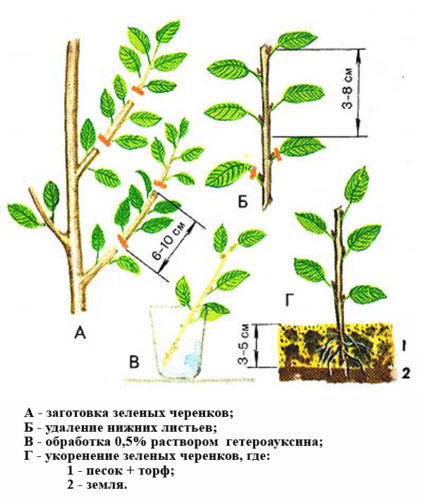
Felt cherry reproduction
- For reproduction with tanks in the spring, the lower, well-developed, annual escape is placed in the groove, sprinkled with wet ground and pinch the bracket.
- The free end of the enclosed escape is directed vertically.
- It is important to provide a permanent watering during spring and summer.
- In the autumn, subject to good rooting, the drains are separated from the mother's bush and planted at a permanent place. Weak and poorly rooted tanks are not separated before spring.
- Saplings obtained from melting fruits for the 2-3rd year of life.
Planting felt cherry: features and conditions
Light-insulated plant, cherry felt, poorly tolerates a transplant to a new place. Therefore, before planting a shrub seedling, it is necessary to choose a suitable area, taking into account all its preferences.
Place for planting felt cherry
- The perennial is well developed on lightweed, drained soils, with a neutral medium reaction. It can be loam or studs. In the case of acidic soils - the soil is pre-cried. Heavy, with an excess of moisture or close grounding soil groundwater, are not suitable for growing cherries felt.
- Place for planting is chosen solar, open, elevated and dry. In the shade, shrub shoots are beginning to stretch, fruiting decreases.
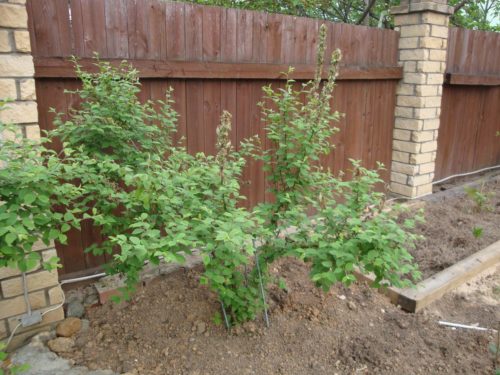
Agrotechnology planting felt cherry
- The seedling seedling seedlings are carried out in spring or autumn, during the period of relative vegetative rest of the plant.
- When landing several seedlings, a distance of at least 1.5-2 m between them, taking into account the subsequent growth of the shrub crown.
- The landing pit is preparing a 50 x 50 cm. For such a mixture, organic and mineral (potash-phosphoric) fertilizers are added to the ground.
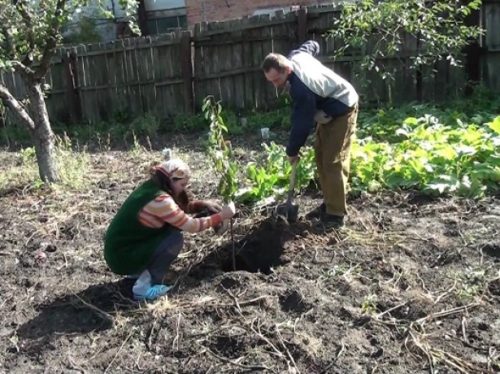
- Before planting the roots of seedlings, cut up to 25 cm (for the development of lateral roots) and loose into the clay bolt.
- On the soil hollyk put a seedling and fall asleep to the level of the root cervy (it should look out of the ground).
In no case can not shuffle the root seed of a seedling, it can lead to the death of the plant!
- The soil around the seedling is well seal and watered with water. It is advisable to immediately climb the rolling circle to peat or humus, providing stable soil humidity.
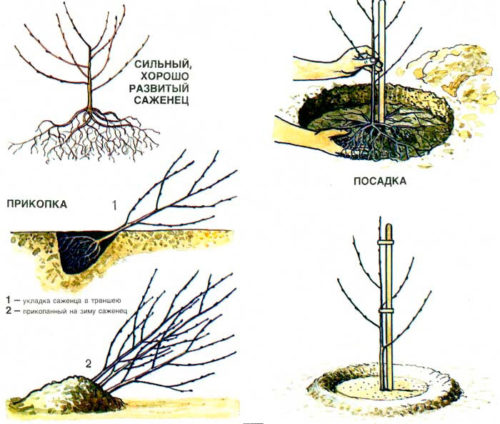
Felt cherry, care
Growing the cherry felt on its plot, we must not forget about the main agrotechnical measures: watering, loosening, feeding and trimming of a tree shrub.
Watering and loosening felt cherry
- The shrub is poorly tolerant of moisture, so watering better exercise moderate, according to the principle "rarely, but abundantly." The average irrigation rate is 1-2 times a month, depending on natural precipitation. The exception is landlined young seedlings in need in more frequent moisture.
- Excessive moisturizing can lead to the recovery of the shrub, and continuous drought - to a decrease in the yield and grinding of fruits.
- After irrigation, the propelled circle is mounted with sawdust, grass or peat.
- Swimming of the soil around the shrub spend a shallow, so as not to damage the surface roots of the cherry.
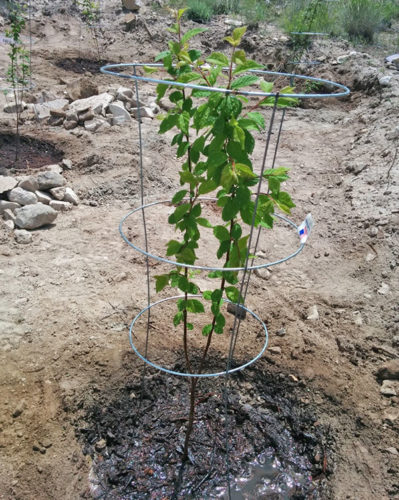
Feeding felt cherry
- In the spring, after the end of flowering, the cherry felt fertilizes nitrogen-containing minerals (ammonium nitrate, urea) and organic fertilizers. The feeding is made by shallow (up to 4 cm) of soil looser, taking into account the close range of roots.
- In autumn, the plant is fed by superphosphates. Nitrogen-containing fertilizers in this period should be excluded, since they stimulate the growth of shoots that can extinate in winter.
- To preserve the neutral acidity of the soil, periodically (1 time in 4-5 years) the soil is subjected to lime.
Trimming felt cherry
- For cherries, the felt is carried out by a sanitary, forming and rejuvenating shrub trimming.
- Pruning allows you to maintain an annual shoot of shoots, form central strong branches and maximize the crown of the plant.
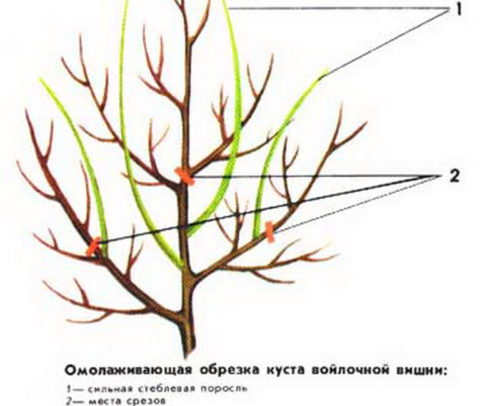
- Sanitary trimming rejuvenates and empults the plant. At the same time, all dry, old, damaged and frozen shoots are removed.
- Forming trimming allows you to adjust the shape and size of the crown. For this annual seedlings cut up to 40 cm; The next year the side shoots are shortened by a third. Special attention during trimming is drawn to the shrub center, removing extra, thickening the crown, branches.
- Pruning is carried out every year, leaving in spring no more than 9-10 strongest shoots.
- For adult scrupters, every 5-6 years spend a rejuvenating trimming, removing the branches of the first, second row and the thinning central part. Excessive trimming can be dangerous to freezing shrub in winter.
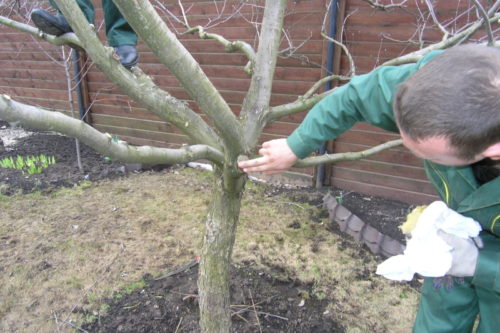
Diseases and pests of felt cherry
- Cherry felt can be damaged by pests-rodents (mice, hares). To protect the bush, gardeners are covered with a trunk of a cherry (especially root neck) with a dense cloth (by kapron stockings, bars, spunbond), set traps of bait, lay out poison.
- Harm Cherry can also apply other pests: WLL, leaflet or plum fruit. You can fight with folk methods or special insecticides.
- From diseases are the most common infection with moniliosis. The spring form of the disease, is called "monilila burn" when the branches are started with the leaves, and the flowers will noticeably raise. If the first signs of the disease appears, damaged branches are removed, and the sections are processed with copper vigorous or garden water. In summer, monilion causes the appearance of rotted on the fruits. The plant is treated with Fundazole according to the instructions.
- If dark spots appear on the leaves of perennials, turning over time into holes - this means that the cherry has been infected with abwise. On shoots, brown cracking spots also appear. To combat the disease, all the affected parts of the plant must be cut and destroy. Places of severe sections are lubricated with a solution of lime and copper sulfate, and the entire bush is treated with burgundy liquid or dubcatch.
- Felt cherry, unlike other types of cherries, resistant to the disease Cokkkomikosis and is rarely amazed by this mushroom. If the signs of the disease still appear on the cherry (dark spots on the leaves, after which they are yellow and fall), the bush is treated with a fungicidal drug.
- For the prevention and prevention of infection with fungal diseases, in the spring, to the dissolution of the kidneys and after flowering, the cherry is treated twice with drugs containing copper (Xome, oxych).
Harvesting felt cherry
- Collect ripe fruit in summer, in small and shallow packaging, in order to injure gentle busty as much as possible.
- Ripe fruits hang on the branches for a long time (up to a month), which allows you to gradually collect fruits.
- Given that the fruits are poorly preserved after the collection, you need to immediately begin to dispose of them.
Protection of felt cherry from frost
- Cherry felt - winter-hardy culture, perfectly tolerate frosts. Some varieties are not afraid even the temperature in - 40 0WITH.
- The only risk of frostbite happens in the period of thaws and unexpected freezers. To avoid similar troubles, under the bush pinched a large layer of snow, they pluck it up, and on top there are sawdust or straw. So manages to delay the awakening of the plant so that the return spring frosts do not damage it.
Cherry felt, benefit and meaning
- Fruits of cherry felt are considered valuable and nutritious. Carbohydrates containing in berries, vitamins B, C, RR, organic acids, tanning substances and polysaccharides provide human organism with important micro and macroelements. Moreover, many of them quantify significantly exceed their "relatives" - ordinary cherry.
- Thanks to compactness and shortness, the cherry felt is convenient not only when harvesting, but also as a beautiful decorative plant. The bushes are often planted as living ingredients or borders, combining "pleasant with useful."
- The well-branched root system of cherries allows you to plant them on the slopes, slopes, terraces, thus strengthening soil and preventing landslides.
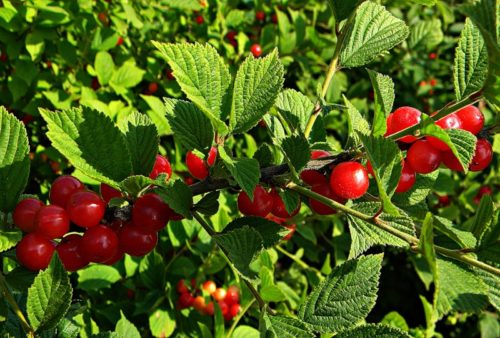
conclusions
- Cherry felt is a decorative and fruit culture, enduring to adverse climatic conditions, winter-hardy and sun-born culture.
- The rapid fast-growing tree shrub easily multiplies and rooted in a new place, starting fruiting after 2-3 years after landing.
- In order for the cherry felt successfully in a new place, it is necessary to comply with all the conditions when choosing a place to land. And the correct agricultural engineering planting seedlings will provide a plant rapid growth and development.
- A varietal variety of cherries felt allows you to choose the most acceptable variety, depending on the requests and climatic conditions of the region.
- Proper and competent perennial care makes it possible to extend his life by 2 times, receiving annual stable fruit crops. Of particular importance is the trimming of the shrub.
- Landing and care for felt cherries does not represent special difficulties. It is enough to carefully examine the presented material and guided by the advice of practitioners of gardeners.
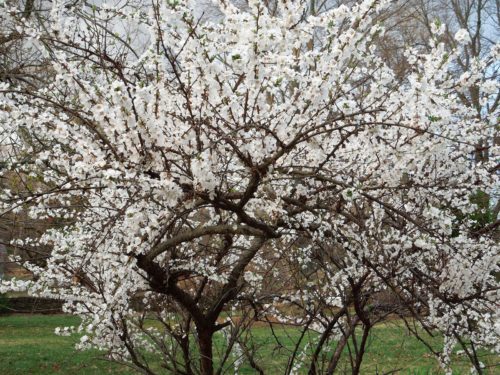

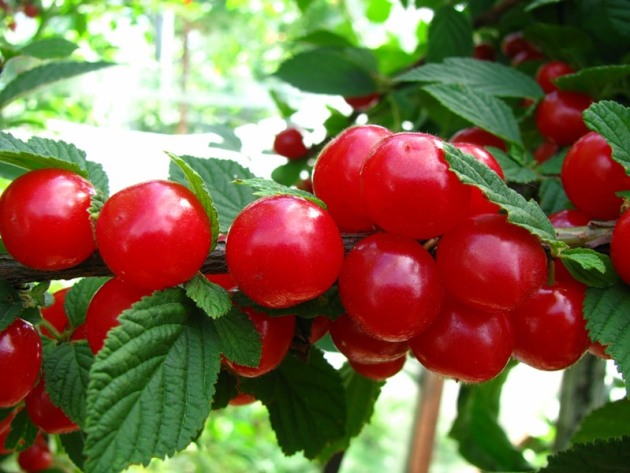
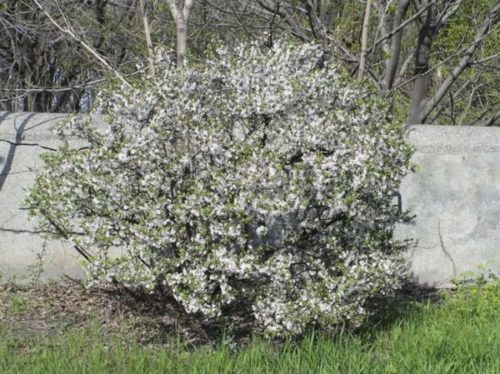
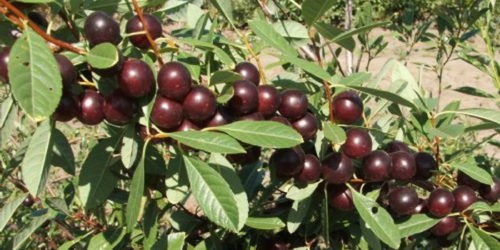
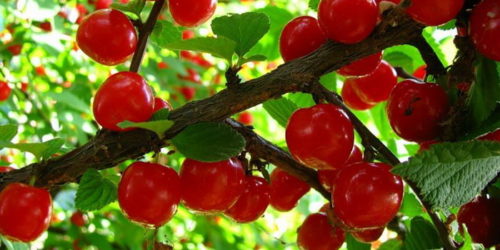
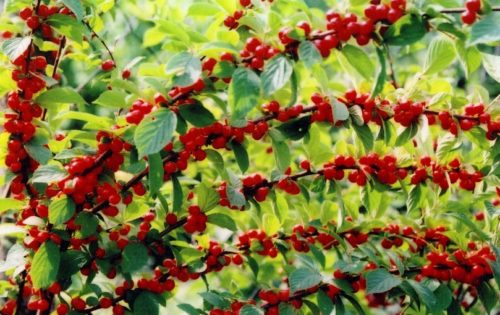
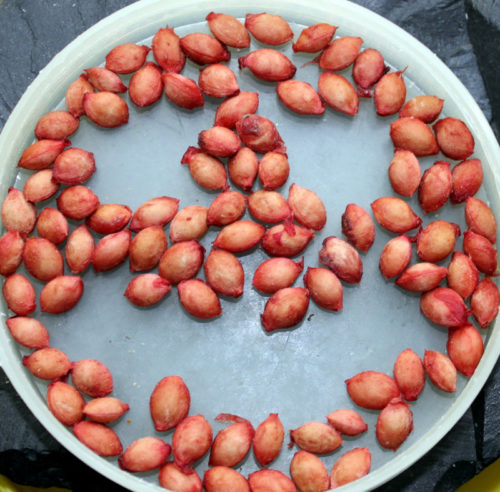
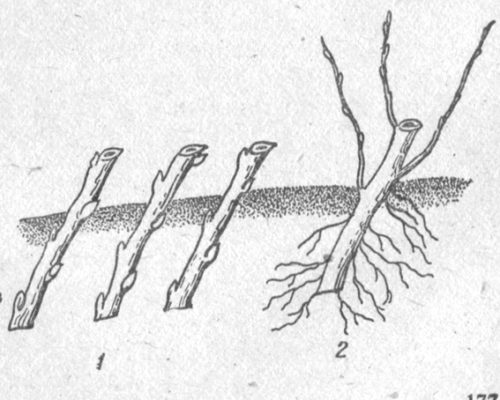
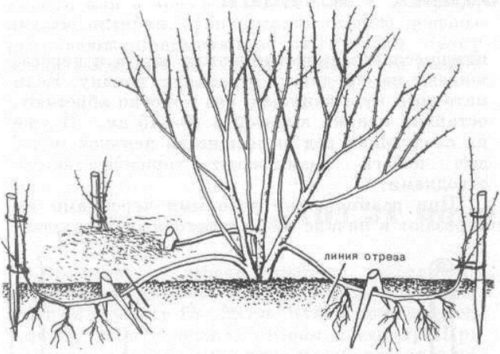
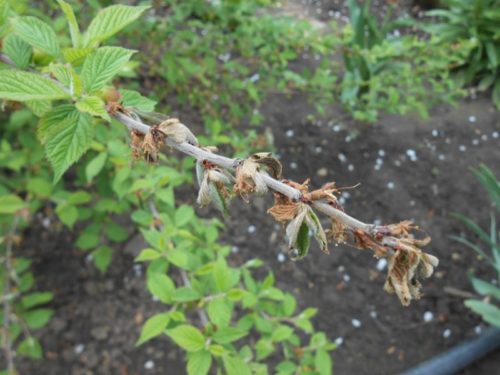
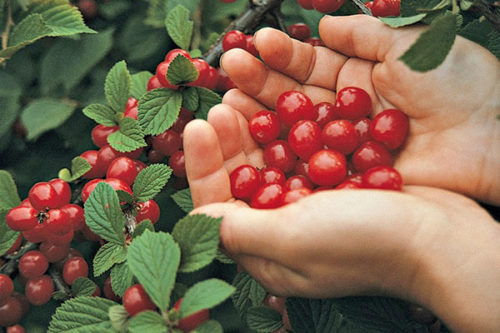
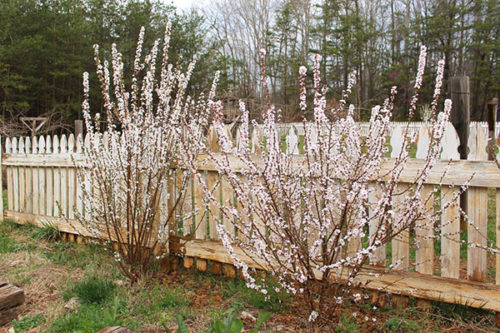
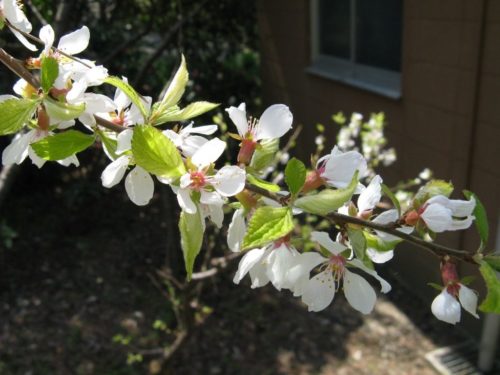
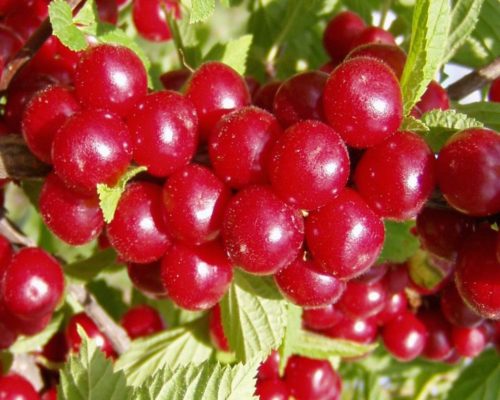
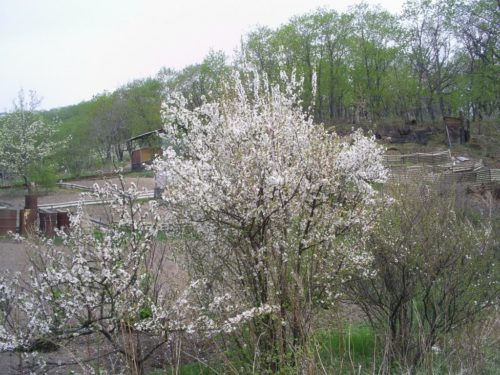
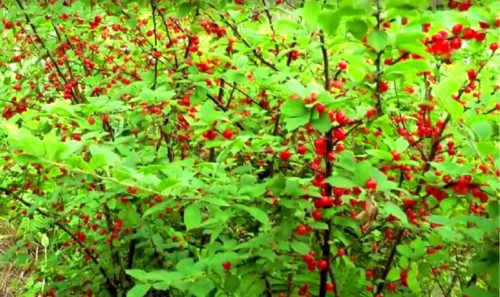
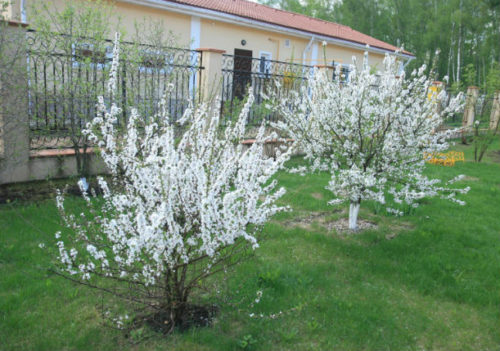
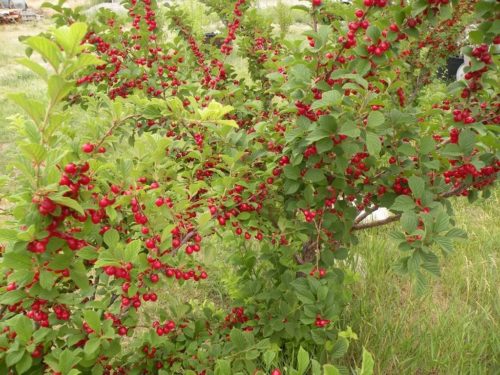












 Start a discussion ...
Start a discussion ...